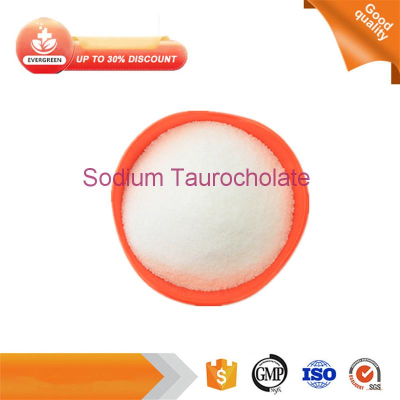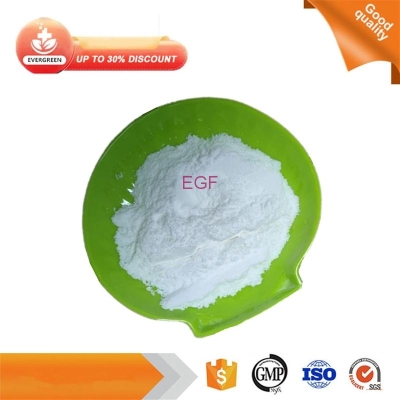-
Categories
-
Pharmaceutical Intermediates
-
Active Pharmaceutical Ingredients
-
Food Additives
- Industrial Coatings
- Agrochemicals
- Dyes and Pigments
- Surfactant
- Flavors and Fragrances
- Chemical Reagents
- Catalyst and Auxiliary
- Natural Products
- Inorganic Chemistry
-
Organic Chemistry
-
Biochemical Engineering
- Analytical Chemistry
- Cosmetic Ingredient
-
Pharmaceutical Intermediates
Promotion
ECHEMI Mall
Wholesale
Weekly Price
Exhibition
News
-
Trade Service
Editor’s note iNature is China’s largest academic official account.
It is jointly created by the doctoral team of Tsinghua University, Harvard University, Chinese Academy of Sciences and other units.
The iNature Talent Official Account is now launched, focusing on talent recruitment, academic progress, scientific research information, interested parties can Long press or scan the QR code below to follow us.
iNature tumor determination is considered to be the rate-limiting step of the metastatic cascade.
However, its basic mechanism has not been well understood.
Uveal melanoma (UM) with single-organ liver metastases may provide a simplified model for the realization of complex colonization procedures.
Because DDR1 is determined to be overexpressed in UM cell lines and specimens, and a large amount of pathological deposition of extracellular matrix collagen (a DDR1 ligand) is noted in the liver microenvironment of patients with metastatic UM, this article assumes that DDR1 and others The hypothesis that the ligand may ignite the interaction between UM cells and the surrounding environment of the liver, thereby enhancing survival, proliferation, dryness and ultimately promoting liver metastatic colonization.
On May 11, 2021, the Pan Jingxuan team of Sun Yat-sen University published an online publication titled "Activation of transmembrane receptor tyrosine kinase DDR1-STAT3 cascade by extracellular matrix remodeling promotes liver metastatic colonization in uveal melanoma" in Signal Transduction and Targeted Therapy (IF=13.
49).
Research paper, the study tested this hypothesis and found that DDR1 promotes the phenotype of these malignant cells and promotes the metastatic colonization of UM in the liver.In terms of mechanism, UM cells secrete TGF-β1, which induces resting hepatic stellate cells (qHSCs) into activated HSCs (aHSCs), which secrete type I collagen.
Such extracellular matrix remodeling activates DDR1, which enhances survival by up-regulating STAT3-dependent Mcl-1 expression, and enhances stemness by up-regulating STAT3-dependent SOX2, and promotes the clonality of cancer cells.
By using 7rh (a specific inhibitor) to target DDR1, it can inhibit growth and proliferation in vitro and in vivo.
More importantly, targeting cancer cells or targeting the microenvironment TGF-β1-collagen I protein loop through the pharmacological inactivation of DDR1 showed significant anti-metastatic effects in mice.
In conclusion, targeting DDR1 signal and TGF-β signal may be a new method to reduce liver metastasis in UM.
Distal organ metastasis (especially life-sustaining organs such as liver, brain and lung) is one of the important causes of treatment failure and death in patients with advanced cancer.
Although breast cancer, lung cancer, and skin melanoma have metastasized to different organ sites, uveal melanoma (UM) patients are characterized by single organ liver metastasis.
The specific metastasis of a single organ can provide a simplified model for the realization of complex metastasis processes.
Metastasis can be divided into internal vascular infiltration, circulation, extravasation and colonization.
Colonization is the rate-limiting step of the transfer cascade.
According to reports, in the experimental metastasis model of melanoma, most (>80%) injected tumor cells can survive the circulation and successfully infiltrate the liver.
Nevertheless, by day 3, only 1 out of 40 cells had formed micrometastases, and by day 10.
3, only 1 out of 100 cells had become macrometastases.
It is believed that colonization is the result of the interaction between "seed and soil" through cell-cell and cell-extracellular matrix (ECM) adhesion and the release of soluble factors, which ultimately allows cancer cells to obtain enhanced viability and enhanced proliferation.
, Enhanced dryness and supportive niche construction.
The driving factors for colonization are not well understood.
However, in such a colonization process, due to its unique three-dimensional supramolecular structure with unique biochemical and biomechanical properties, ECM can not only serve as a growth scaffold, but also provide an amplifier for oncogenic signals in tumor cells.
By connecting specific receptors to regulate cell survival, proliferation and dryness.
Observation of collagen deposition and increased expression of matrix remodeling genes (such as MMPs and collagen crosslinkers) indicates a poor prognosis for breast and pancreatic cancer patients.
Increased collagen deposition can ligate the corresponding surface receptors of cancer cells [for example, the discoidin domain receptor (DDR) family of receptor tyrosine kinases and certain types of integrins (for example, α1β1, α2β1, α10β1 and α11β1)].
DDR, composed of two members, DDR1 and DDR2, regulates downstream molecules (such as STAT3, STAT5), and ultimately coordinates cell adhesion, migration, proliferation and matrix remodeling.
Considering that the liver microenvironment of patients with metastatic UM contains pathological collagen deposition, the researchers hypothesized that DDR and its ligands may ignite the interaction between metastatic cells and their surrounding environment, thereby conferring colonization.
In this study, this hypothesis was tested by analyzing the expression and signal transduction of DDR1 in UM cells.
The study found that UM cells overexpressing DDR1 can domesticate hepatic stellate cells (HSC) to secrete collagen I, and collagen I can connect to DDR1 to activate UM cells to release the soluble cytokine TGF-β1 activated by HSCs, forming a positive To the circulation to enhance survival, proliferation and hyperplasia, and ultimately promote liver metastasis.
These findings may help to understand how tumor cells delineate the host liver microenvironment and provide a theoretical basis for liver metastatic colonization in UM.
Reference message:
It is jointly created by the doctoral team of Tsinghua University, Harvard University, Chinese Academy of Sciences and other units.
The iNature Talent Official Account is now launched, focusing on talent recruitment, academic progress, scientific research information, interested parties can Long press or scan the QR code below to follow us.
iNature tumor determination is considered to be the rate-limiting step of the metastatic cascade.
However, its basic mechanism has not been well understood.
Uveal melanoma (UM) with single-organ liver metastases may provide a simplified model for the realization of complex colonization procedures.
Because DDR1 is determined to be overexpressed in UM cell lines and specimens, and a large amount of pathological deposition of extracellular matrix collagen (a DDR1 ligand) is noted in the liver microenvironment of patients with metastatic UM, this article assumes that DDR1 and others The hypothesis that the ligand may ignite the interaction between UM cells and the surrounding environment of the liver, thereby enhancing survival, proliferation, dryness and ultimately promoting liver metastatic colonization.
On May 11, 2021, the Pan Jingxuan team of Sun Yat-sen University published an online publication titled "Activation of transmembrane receptor tyrosine kinase DDR1-STAT3 cascade by extracellular matrix remodeling promotes liver metastatic colonization in uveal melanoma" in Signal Transduction and Targeted Therapy (IF=13.
49).
Research paper, the study tested this hypothesis and found that DDR1 promotes the phenotype of these malignant cells and promotes the metastatic colonization of UM in the liver.In terms of mechanism, UM cells secrete TGF-β1, which induces resting hepatic stellate cells (qHSCs) into activated HSCs (aHSCs), which secrete type I collagen.
Such extracellular matrix remodeling activates DDR1, which enhances survival by up-regulating STAT3-dependent Mcl-1 expression, and enhances stemness by up-regulating STAT3-dependent SOX2, and promotes the clonality of cancer cells.
By using 7rh (a specific inhibitor) to target DDR1, it can inhibit growth and proliferation in vitro and in vivo.
More importantly, targeting cancer cells or targeting the microenvironment TGF-β1-collagen I protein loop through the pharmacological inactivation of DDR1 showed significant anti-metastatic effects in mice.
In conclusion, targeting DDR1 signal and TGF-β signal may be a new method to reduce liver metastasis in UM.
Distal organ metastasis (especially life-sustaining organs such as liver, brain and lung) is one of the important causes of treatment failure and death in patients with advanced cancer.
Although breast cancer, lung cancer, and skin melanoma have metastasized to different organ sites, uveal melanoma (UM) patients are characterized by single organ liver metastasis.
The specific metastasis of a single organ can provide a simplified model for the realization of complex metastasis processes.
Metastasis can be divided into internal vascular infiltration, circulation, extravasation and colonization.
Colonization is the rate-limiting step of the transfer cascade.
According to reports, in the experimental metastasis model of melanoma, most (>80%) injected tumor cells can survive the circulation and successfully infiltrate the liver.
Nevertheless, by day 3, only 1 out of 40 cells had formed micrometastases, and by day 10.
3, only 1 out of 100 cells had become macrometastases.
It is believed that colonization is the result of the interaction between "seed and soil" through cell-cell and cell-extracellular matrix (ECM) adhesion and the release of soluble factors, which ultimately allows cancer cells to obtain enhanced viability and enhanced proliferation.
, Enhanced dryness and supportive niche construction.
The driving factors for colonization are not well understood.
However, in such a colonization process, due to its unique three-dimensional supramolecular structure with unique biochemical and biomechanical properties, ECM can not only serve as a growth scaffold, but also provide an amplifier for oncogenic signals in tumor cells.
By connecting specific receptors to regulate cell survival, proliferation and dryness.
Observation of collagen deposition and increased expression of matrix remodeling genes (such as MMPs and collagen crosslinkers) indicates a poor prognosis for breast and pancreatic cancer patients.
Increased collagen deposition can ligate the corresponding surface receptors of cancer cells [for example, the discoidin domain receptor (DDR) family of receptor tyrosine kinases and certain types of integrins (for example, α1β1, α2β1, α10β1 and α11β1)].
DDR, composed of two members, DDR1 and DDR2, regulates downstream molecules (such as STAT3, STAT5), and ultimately coordinates cell adhesion, migration, proliferation and matrix remodeling.
Considering that the liver microenvironment of patients with metastatic UM contains pathological collagen deposition, the researchers hypothesized that DDR and its ligands may ignite the interaction between metastatic cells and their surrounding environment, thereby conferring colonization.
In this study, this hypothesis was tested by analyzing the expression and signal transduction of DDR1 in UM cells.
The study found that UM cells overexpressing DDR1 can domesticate hepatic stellate cells (HSC) to secrete collagen I, and collagen I can connect to DDR1 to activate UM cells to release the soluble cytokine TGF-β1 activated by HSCs, forming a positive To the circulation to enhance survival, proliferation and hyperplasia, and ultimately promote liver metastasis.
These findings may help to understand how tumor cells delineate the host liver microenvironment and provide a theoretical basis for liver metastatic colonization in UM.
Reference message:







